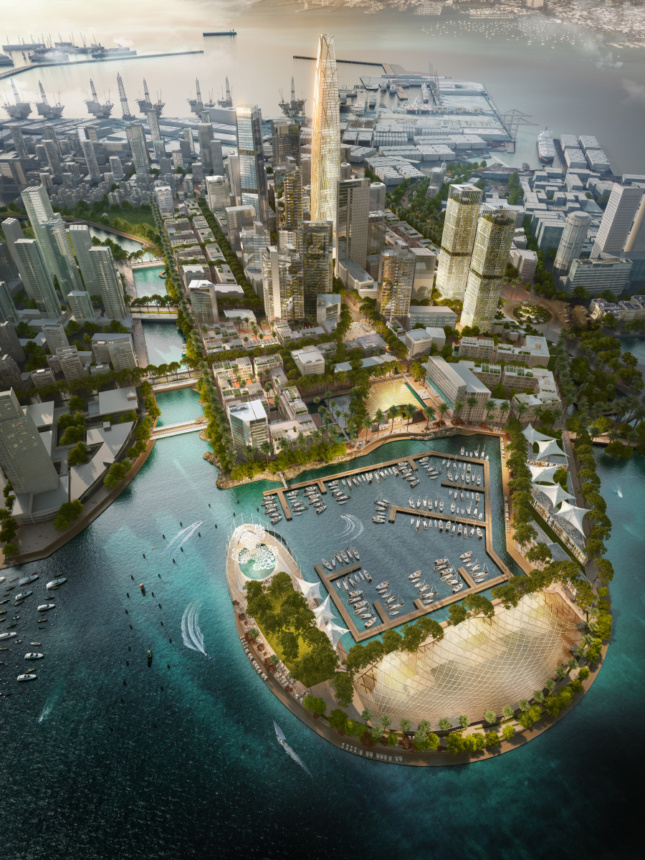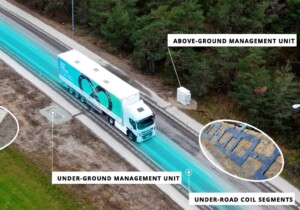In addition to the more infamous killing and pillaging conducted by its various hordes, the Mongol Empire, first led by Genghis Khan and later by his grandson Kublai, brought nearly all of Asia, much of the Middle East, and some of Europe under a unified system of trade and commerce in the 13th century. Consolidating ancient Silk Road mercantile connections, it brought currency into widespread use and generally sought win-win trade deals with conquered territories. While that empire faded by the mid-14th century, it gave the world a precursor to the modern-day state of China, which has embarked on its own ambitious—and, to some, unsettling—quest to link a considerable portion of the world through trade.
The Belt and Road Initiative (BRI), launched in 2013 by Chinese president Xi Jinping, includes hundreds of infrastructure projects financed and constructed in part or in whole by Chinese entities in lands far beyond China’s borders. Projects include ports, airports, rail lines, utilities, industrial centers, highways, and even entire new cities and urban sectors. “Belt” refers to roads and railways while, paradoxically, “road” refers to sea-lanes; together they aim for nothing less than the unification of almost all of Asia and Africa.
The initiative segments the globe into “corridors” and involves differing levels of participation from host countries. There is no official count of participating countries, but estimates range from 60—covering nearly all of Asia—to well over one hundred. The BRI’s six main economic corridors include the New Eurasian Land Bridge, the China-Central Asia–West Asia Economic Corridor, the China–Pakistan Economic Corridor, the Bangladesh–China–Myanmar Economic Corridor, the China–Mongolia–Russia Economic Corridor, and the China–Indochina Peninsula Economic Corridor.

Analysts estimate that trade generated by the BRI reached $117 billion last year. The total estimated cost, by 2027: up to $1.3 trillion. Whether that investment will pay off for China remains to be seen. Chinese banks and companies hope to profit from loan payments and contracts; the Chinese state hopes to benefit by opening markets and gaining influence. The World Bank estimates that the BRI could reduce transportation times on many corridors by 12 percent, increase trade between 2.7 percent and 9.7 percent, increase income by up to 3.4 percent, and lift 7.6 million people from extreme poverty.
Consisting largely of heavy infrastructure, these projects are unlikely to result in lavish Xanadus to stoke the architectural imagination. With the exception of some impressive new cities and city districts, such as Port City in Colombo, Sri Lanka, and some choice high-speed rail stations, BRI projects include workaday structures like cargo terminals, highway bridges, and the odd potash plant. The BRI recalls past geopolitical initiatives, like the Marshall Plan, by which the United States revived, and benefited from, Europe’s economy after World War II. But the BRI dwarfs the Marshall Plan, which comprised $13 billion of investment, or around $100 billion in today’s dollars—much less than BRI’s trillion-dollar scope.
As arguably the biggest collection of construction projects in human history, the BRI offers ample opportunities for architects, contractors, engineers, and other designers. Many, if not most, of the firms involved are Chinese concerns with close ties to the state. They include state-owned enterprises like China Ocean Shipping Company (COSCO) and China State Construction Engineering Corporation, the world’s third-largest shipping company and largest construction company, respectively. Both are massive enterprises with numerous subsidiaries, and though they are publicly traded, they ultimately answer to the Chinese Communist Party.
In many ways, this effort to build soft power through hard infrastructure extends a domestic development strategy that China has followed for the past two decades. Itself a developing nation not long ago, China has built up its own ports, roads, and railroads in order to unify its national economy and give its manufacturing sector—which comprises 20 percent of the world’s output of goods—access to global markets.
The Chinese government optimistically refers to the BRI as a 21st-century Silk Road, one that harmoniously links economies and increases prosperity for dozens of countries and billions of people, representing up to 60 percent of the world’s economic output. China pitches these projects to host countries as tools of economic development. Analysts say that success, for China and BRI partners alike, depends on far more than concrete and steel. The onus falls on host countries to make use of China’s largesse. Efficient trade relies on everything from effective local governance to the mobility of workers to the mitigation of environmental impacts. In the case of partners like Belarus (sometimes referred to as Europe’s last dictatorship) whose governments are unstable, corrupt, or underdeveloped, reforms may pose greater challenges than does the development of megaprojects.
In many cases, benefits to host countries have not materialized. Many projects use little local expertise or labor; rather, they are boons for Chinese engineering firms, construction companies, and suppliers such as steel and concrete manufacturers. Once built, they take on a nearly colonial tenor, moving raw materials out of host countries and moving Chinese goods into them. And no matter how economists feel about BRI projects, the initiative has already alarmed environmentalists. The number and physical size of projects promise to remake urban landscapes, alter—and destroy—natural landscapes, and consume untold millions of tons of natural resources, building materials, and fossil fuels. Chinese environmental laws and practices are also notoriously lax compared to those in the U.S. and Europe. In 2017 the World Wildlife Fund (WWF) issued a report documenting BRI projects’ numerous incursions into sensitive habitats. WWF identified “high impacts” throughout nearly all of Southeast Asia and “moderate impacts” in BRI corridors in Central Asia. BRI projects have also been associated with increases in the use of coal for power production in many host countries.
Beyond environmental effects, even when host countries own their assets, they are indebted to Chinese financiers. Reports indicate that many countries cannot pay off construction loans, leaving them indebted to China indefinitely. Many projects have turned into white elephants. Mattala Rajapaksa International Airport in Sri Lanka was designed to accommodate one million passengers per year. Though fully operational, Mattala currently serves zero passengers, while also servicing $190 million in debt to Chinese banks. Having been a relatively poor, developing country so recently, China likely understands the pressure points of the Myanmars and Mozambiques of the world better than any other global power does.
The Center for Global Development estimates that as many as eight countries involved with the BRI are already at risk of debt distress. Some countries are in debt to China by a factor of as much as 20 percent of their GDPs. Others are now approaching BRI proposals more gingerly than they might have when the program launched. Malaysia recently canceled $22 billion in BRI projects; other countries, particularly Kenya and Mozambique, are pushing back against proposals and renegotiating deals. Ultimately, economic domination via financing may not be a great strategy—flush with cash though they may be, Chinese banks want returns on their investments no less than Western banks do. Then again, even if they aren’t repaid, the Chinese state might still get what it wants in the form of global influence.
In other words, the BRI is as much a geopolitical experiment as it is an economic development strategy.
Josh Stephens is contributing editor to The California Planning & Development Report and author of the forthcoming The Urban Mystique: Notes on Los Angeles, California, and Beyond.











